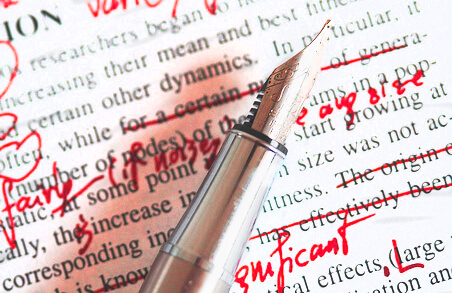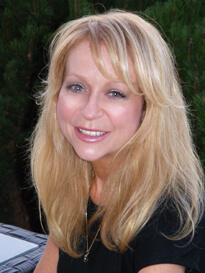 Thanks to freelance editor Arlene Prunkl for this guest post!
Thanks to freelance editor Arlene Prunkl for this guest post!
In this post, I’m going to address what is largely a subject of annoyance and confusion to many writers. That is, the three common kinds of dashes, and where to use each of them properly.
First, there’s the hyphen. The smallest member of the dash family, it’s used primarily for—you may have guessed it—hyphenation of compound words. If you follow this simple rule, you can’t really go wrong. It’s also used to separate numbers (such as in a phone number), or to separate letters in a word that is spelled out. Try to avoid hyphens in URLs; they can create ambiguity at line breaks.
The second-longest dash is called an en dash (in the olden days of typesetting, this was considered the length of the letter n). The main use of an en dash is to connect numbers and indicate ranges, including date ranges (1943–2006) and page ranges (pp. 167–179). The Chicago Manual of Style,16th Edition, says, “In this use it signifies up to and including (or through). For the sake of parallel construction the word to, never the en dash, should be used if the word from precedes the first element.” The same goes for and and between.
The en dash can also be used with spaces on either side to serve in place of a comma or brackets, as a pause in the sentence, or to insert and amplify or explain a related idea. Chicago doesn’t recommend this, however, and neither do I. I prefer the em dash—like this—I think it simply is more aesthetically pleasing. But it’s your choice.
The third kind of common dash is the aforementioned em dash, which is the most common and versatile of all the dashes (in the olden days of typesetting, this was considered the length of the letter m). Use a pair of em dashes in the same way I described in the preceding paragraph: to amplify or elaborate on a related idea in a sentence. In dialogue, use an em dash in particular to indicate if the speaker is interrupted or if there is a sudden break in the speaker’s idea (say, for example, a loud thundercap) or sentence structure. Use three dots (an ellipsis) only when the speaker’s voice is trailing off.
Both the en and em dash can be found in “Symbols” under the Insert pulldown menu in Microsoft Word. (When editing on paper, which is rare these days, I use a carat mark and simply write “N” or “M” above it to indicate the insertion of this mark.)
Finally, you may have noticed that you can’t find em or en dashes in e-mail or for a blog. Some computer software and e-mail programs simply do not allow for their use, so I resort to using a two hyphens in a row — with spaces on either side like this — to indicate a longer dash. And I sometimes copy and paste em dashes from MS Word into my e-mails (as I did here) simply to make my meaning clearer. Perhaps you already do this too!
 PenUltimate Editorial Services: Freelance editor Arlene Prunkl provides all levels of editorial services from substantive editing through copy editing and proofreading for a wide variety of genres including all kinds of fiction and nonfiction, memoirs, self-help, and more. Arlene works mainly with self-publishing authors and in 2011 was a finalist for the Tom Fairley Award for Editorial Excellence, Canada’s top editing award. Email Arlene at info@penultimateword.com.
PenUltimate Editorial Services: Freelance editor Arlene Prunkl provides all levels of editorial services from substantive editing through copy editing and proofreading for a wide variety of genres including all kinds of fiction and nonfiction, memoirs, self-help, and more. Arlene works mainly with self-publishing authors and in 2011 was a finalist for the Tom Fairley Award for Editorial Excellence, Canada’s top editing award. Email Arlene at info@penultimateword.com.

3 kinds of dashes? back to school for me
This shows how long it has been since I have taken any kind of English class. I didn’t even know there were different kinds of dahes.
uh… let’s not 🙂 In MS Word for PC, hit dash twice, it turns into an em dash or simply hit Ctrl+Alt + the – on the number pad.
If you use a Mac—I use a MacBook Pro—you can insert an en dash by using Option + Hyphen or an em dash by using Shift + Option + Hyphen.
Atta boy – let’s make the world Mac!